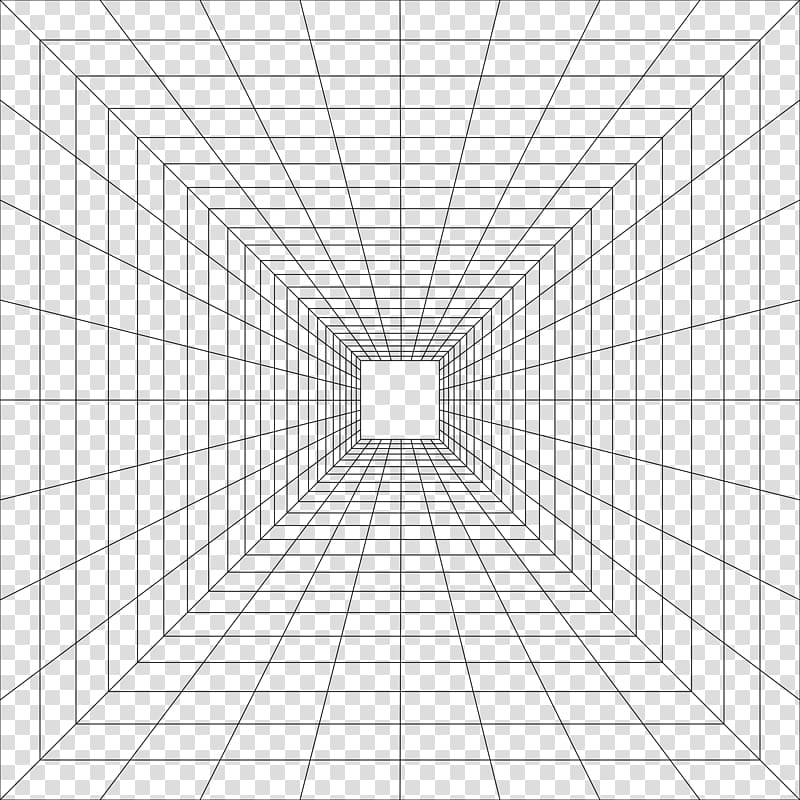

THIS PLANE HAS A CONSTANT RIGHT ANGLE RELATIONSHIP WITH THE CENTRAL VISUAL RAY. To understand perspective drawing a PICTURE PLANE must be imagined between the observer and subject. When you look through a telescope or hold a pencil so that it appears as a point the telescope or the pencil is exactly on your central visual ray. This line is sometimes called the "center line of sight" or the "central direction of seeing." We shall call it the CENTRAL VISUAL RAY. When we look about, essentially what we do is focus upon a succession of spots or "centers of interest," each of which is fixed by a sight line at the exact center of the cone of vision. You can test your cone of vision by looking straight ahead and swinging your outstretched arms in and out of sight. If a greater angle is used in a drawing, it implies a moving cone of vision - and the picture will be distorted. ) The angle of this cone is between 45 and 60 degrees. (In reality these lines are light rays coming from the subject to the eye. This means drawing with a limited "field of vision." This field is usually called the CONE OF VISION because of the infinite number of sight lines which radiate in a cone-like pattern from the eye. Picture PlaneĪ perspective drawing will look correct only if the artist's viewpoint and his direction of viewing the subject are relatively fixed. Notice that the horizontal as well as the vertical lines of the end maintain their real directions.Ĭhapter 3: HOW WE SEE FOR PERSPECTIVE DRAWINGĬone Of Vision. The bench top, though, would strongly converge and foreshorten. If Junior walked around the bench and looked at the end head-on, the true geometry of the end rectangle would appear. (The vertical lines give a sense of vertically but they are not actually parallel to the edge of the page.) Note that this viewpoint is more revealing than the first.Ĥ. The horizontal and vertical lines appear to converge and all surfaces are foreshortened. His parents at ground level might have this view.


 0 kommentar(er)
0 kommentar(er)
